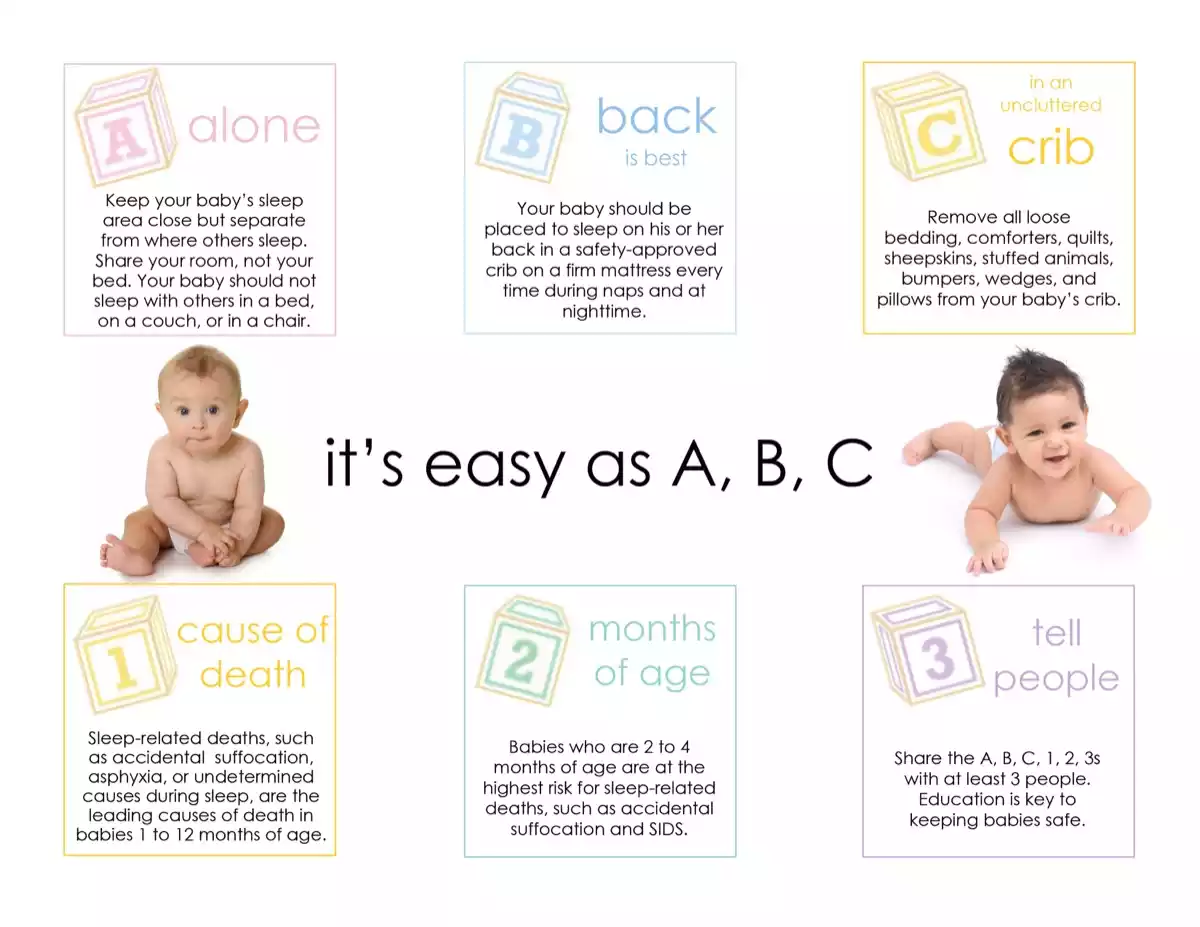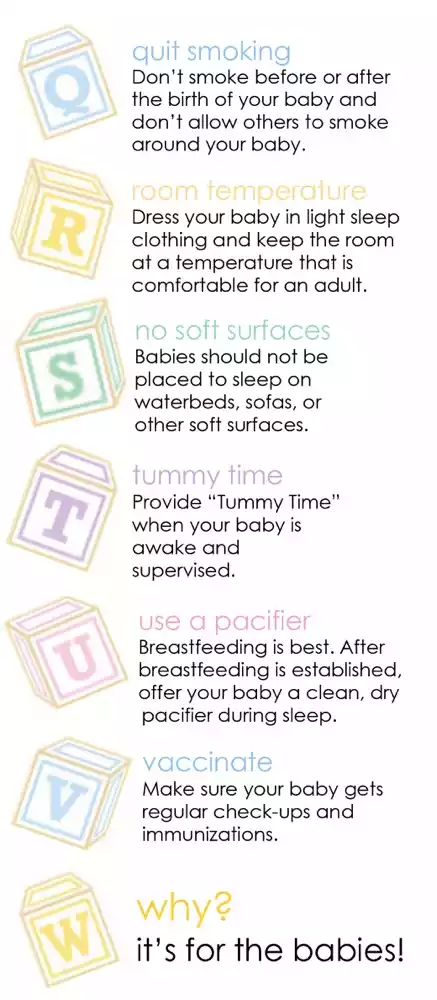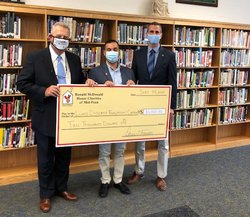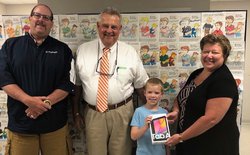Cribs for Kids
Every year, some infants die while sleeping. Learn how to keep your baby safe by making sure you have a safe crib and that you are following all of our safe sleeping guidelines.
Cribs for Kids Program
Every year, some infants die while sleeping. Parents can reduce the risks of this tragedy by knowing and following some simple guidelines. These guidelines will help you meet the goal of making sure the sleeping baby’s breathing remains clear and unobstructed, and you will be assured that the baby does not get into a position that could cause injury or even death.
To reduct the risk of infant sleep-related deaths, the Consumer Product Safety Comission, Cribs for Kids®, and the American Academy of Pediatrics recommend that infants sleep on their backs on a firm mattress in a safety approved crib, with no soft bedding or comforters, with no exposure to cigarette smoke, and with a room temperature that is comfortable to adults.
Babies are safest sleeping alone, on their back, in a safety-approved crib; never on their front or side.
Since 1998, the national Cribs for Kids® campaign has provided cribs and educational materials about ways to prevent accidental suffocation, and reduct the risk of SIDS, to families throughout the United States. This is made possble thanks to the generosity of foundation, corporations, special event fundraisers, and partnerships with Graco Children’s Products, and Pitt Ohio Express.
Learn More About Cribs For Kids®
FAQs on Safe Sleep for Babies
What is the safest way for a baby to sleep?
The safest way for your baby to sleep is along, on its back, in a crib. Babies have died because they were smothered by an adult, another child, or objects such as pillows, comforters, bumpers, soft bedding, and stuffed animals. Babies also get trapped between the bed and the wall or bed frame, or between cushions on a sofa. Sometimes a baby is injured by rolling off an adult bed.
What if my babysitter wants to let my baby nap on a sofa or a cushioned chair?
Even away from home, a baby should always sleep in a safety-approved crib. Some parents use a portable crib or Pack ‘n Play for trips away from home.
I like the closeness of sleeping with my baby, how can I do this safely?
Cuddling with the baby during feeding time and waking hours can best develop that closeness. However, at bedtime, room-sharing is best. With a baby-safe crib placed next to your bed, the baby will sense your nearness and still have a safe place to sleep.
What are some guidelines for parents and caregivers to follow?
- The safest way for your baby to sleep is alone, on it’s back, in a crib.
- The baby’s crib should be in the parents’ room, if possible. The crib should have a firm mattress that is closely fitted to the sides of the crib, and a tight-fitting sheet.
- Don’t over-dress or over-bundle the baby. Consider using a sleeper or sleep sack instead. Do not use pillows, bumpers, toys, or wedge.
- Never let a baby fall asleep in a bed, chair, or on a couch with another person.
- A baby should sleep in a smoke-free home.
- Breastfeeding has important health benefits for babies, but do it safely. When breastfeeding, make sure you are in a position that will allow you to stay awake. When finished, return the baby to the crib.
- After breastfeeding is firmly established consider offering your baby a pacifier at naptime and night time.
Is my baby’s crib safe?
Your baby’s crib should have:
- Railings that are not more than 2 3/8 inches apart (you can’t fit a soda can through them).
- A firm mattress that fits snugly in the frame.
- A fitted sheet that is tight around the mattress.
- No quilts, comforters, duvets, heavy blankets, stuffed animals, bumper pads, sleep positioners, sheepskins, etc. They can obstruct the baby’s breathing.
Am I eligible for the Cribs for Kids® Program?
In order for an Applicant to secure a safe sleep environment (pack-n-play), along with safe sleep education (both of which are free of charge) the child must be born and the following documentation is required to be provided:
- Birth Certificate (or crib card if the infant has just been born)
- Insurance Card (for either the infant or the parent if the infant does not have one yet)
- Identification for Parent completing paper work (driver’s license/photo ID is preferable)
- Brief written document stating why the safe sleep environment is necessary
- (cannot afford one/unable to work due to complications/single parent, etc)


View our Recent Blogs

Lung Disease Foundation of Central PA Launches Vaping Sensor Pilot Program with Hollidaysburg Area School District
